Abstract
1. Potential differences associated with the compartments of goat and sheep conceptuses have been measured in vivo and in vitro during the last half of gestation and the osmolarity, and the [Na+], [K+], and [Cl-] of maternal and foetal plasma and amniotic and allantoic fluid taken from these animals were determined.
2. The potential difference (p.d.) patterns of both goats and sheep were the same.
(a) The transplacental p.d. was about 71 mV (foetus negative) in the goat, and about 51 mV (foetus negative) in the sheep.
(b) The amniotic fluid p.d. (i.e. the p.d. measured between the maternal extracellular fluid and the amniotic fluid) decreased as gestation advanced (from 110 to 70 mV in the goat, and 90 to 50 mV in the sheep) and was equal to the sum of the transplacental p.d. and a p.d. between the foetal blood and the amniotic fluid. The amniotic fluid was negative relative to both maternal and foetal blood.
(c) An allantoic fluid p.d. (measured between the maternal extracellular fluid and the allantoic fluid) of about 107 mV in the goat, and about 96 mV in the sheep, was equal to the sum of the transplacental p.d. and a p.d. between the foetal blood and the allantoic fluid. The allantoic fluid was negative relative to both maternal and foetal blood.
(d) The results suggest that p.d.s of the fluid sacs arise from activity between the foetal fluids and the blood perfusing the foetal membranes, and not from activity across the full thickness of the foetal membranes.
3. The ionic concentrations were considered in relation to the electrochemical gradients found between the maternal and foetal fluid compartments to determine whether the ions were distributed according to electrochemical equilibrium.
(a) It seems that ions in the amniotic fluid tend to equilibrate with foetal plasma, and not with maternal plasma or allantoic fluid, that changes in the [Na+] and [K+] of amniotic fluid can be accounted for largely in terms of passive factors, and that variations in the [Cl-] are associated with activity of an electrogenic Cl- pump directed from the foetal blood into the amniotic fluid.
(b) It appears that ions in the allantoic fluid can exchange with those of both maternal and foetal plasma, that an electrogenic pump effects absorption of Na+ from the allantoic fluid into the foetal blood, and that the [K+] and [Cl-] of allantoic fluid are maintained largely by passive exchange under the action of electrochemical gradients between maternal plasma and allantoic fluid, and between foetal plasma and allantoic fluid.
4. The results considered in the context of Na+ passage between mother and foetus call in question the general assumption that all Na+ reaches the foetus by passing across the placenta.
Full text
PDF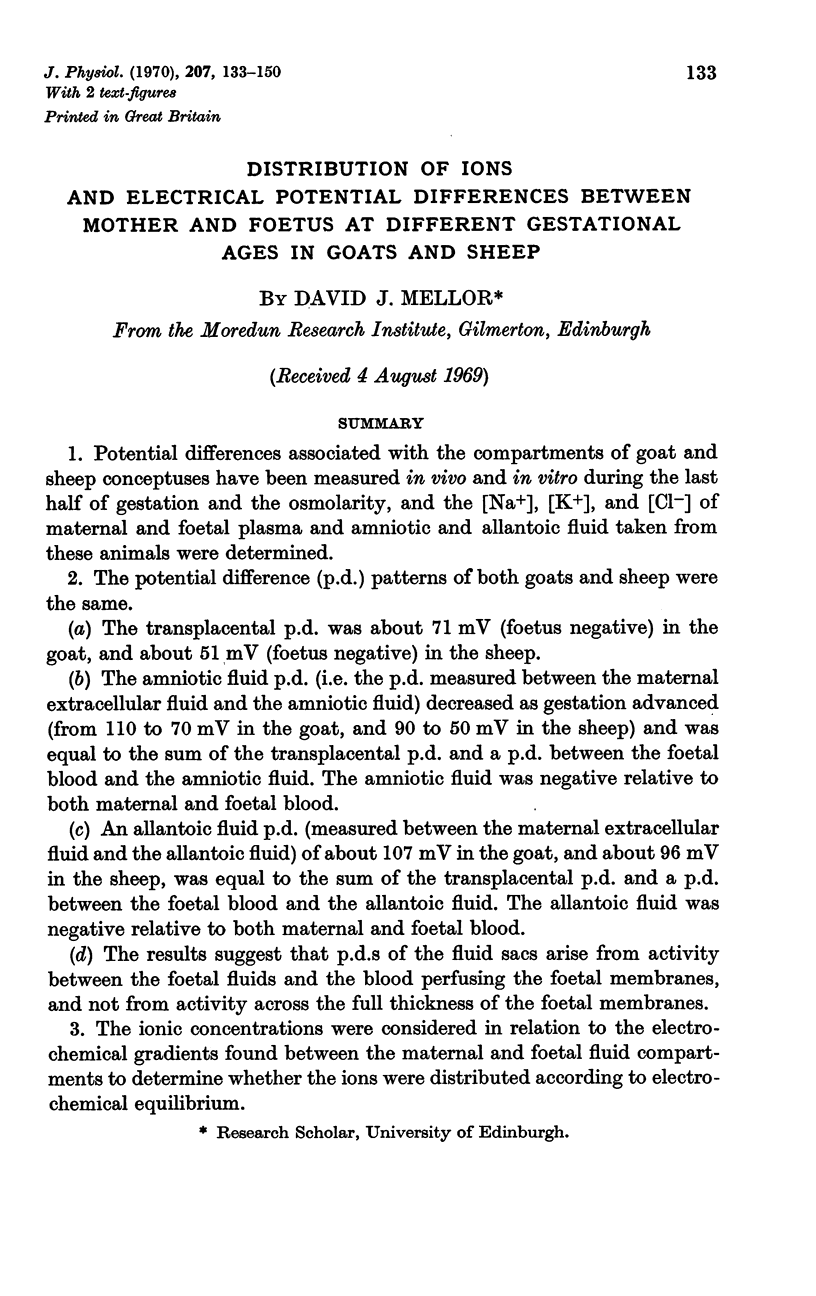
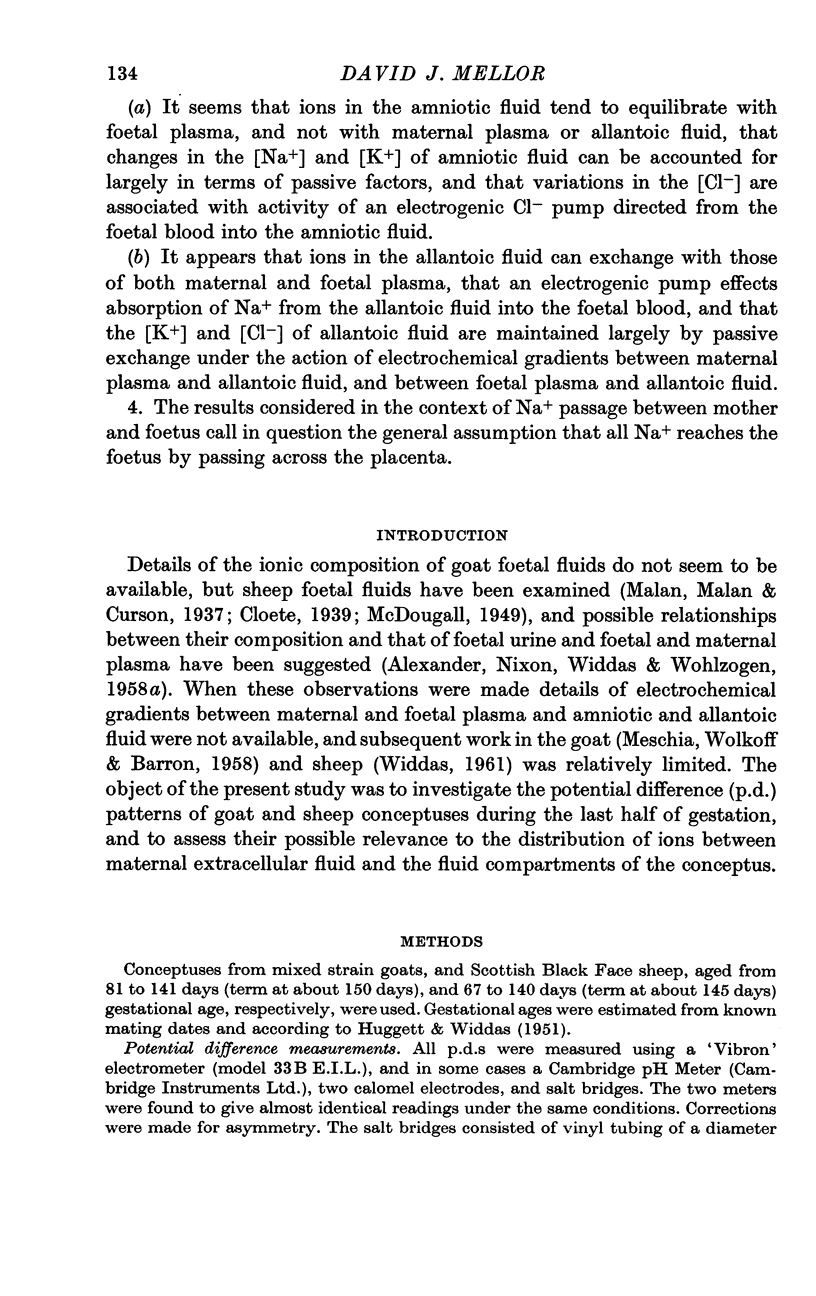
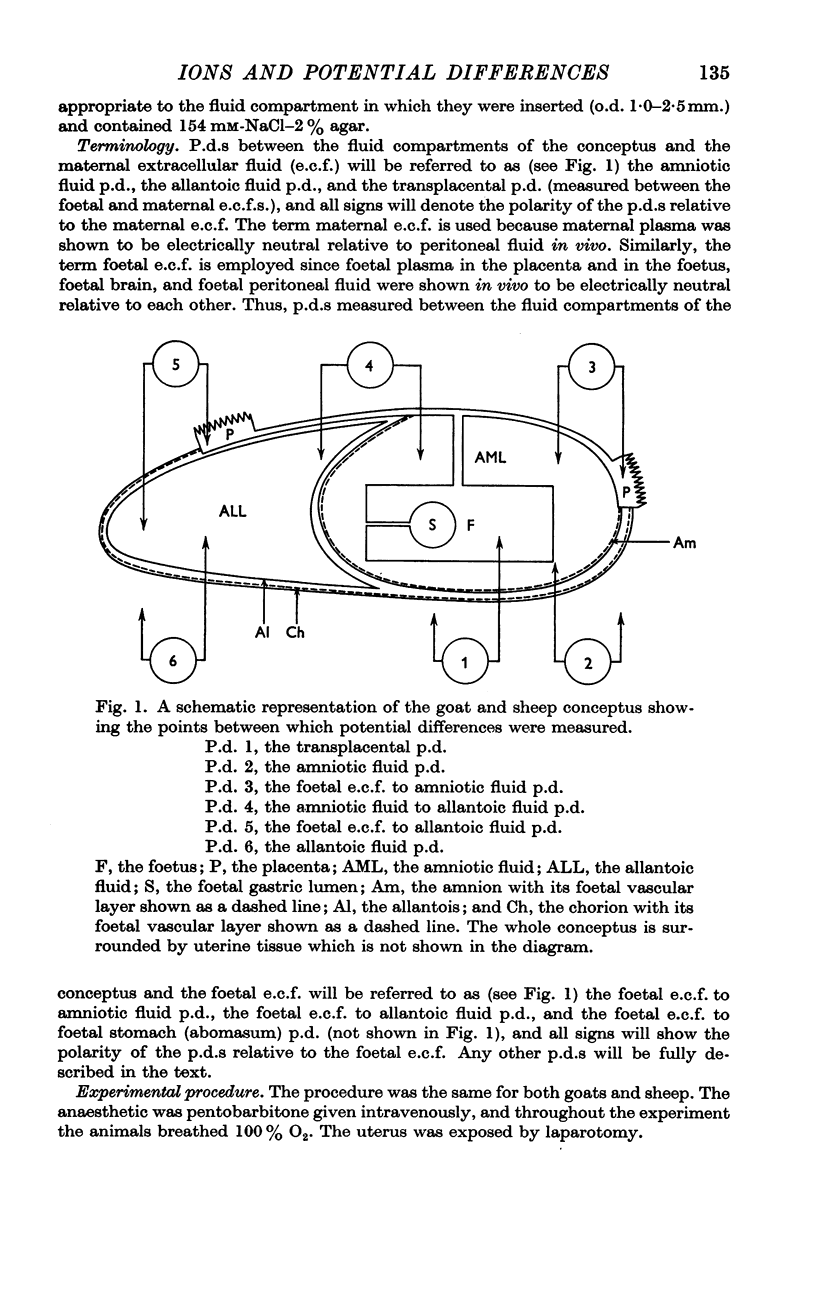
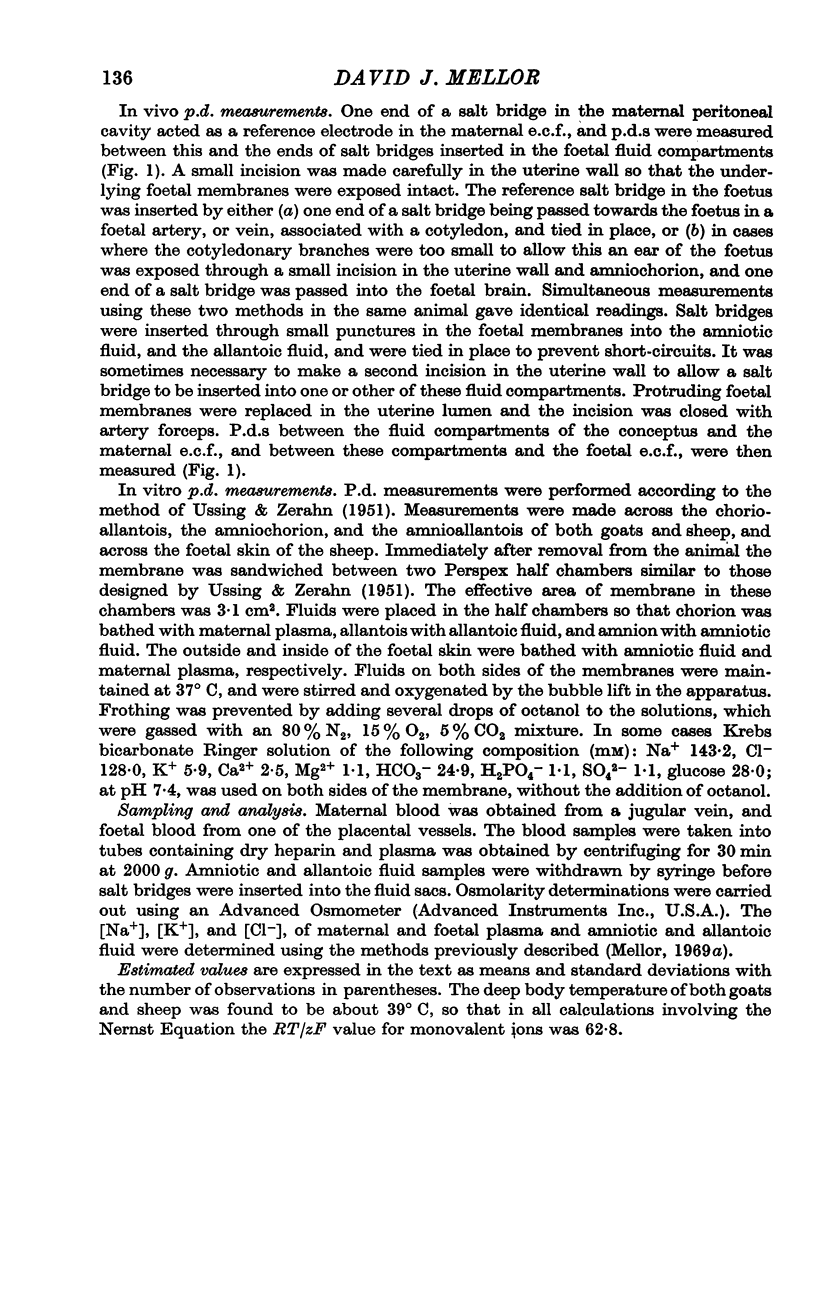
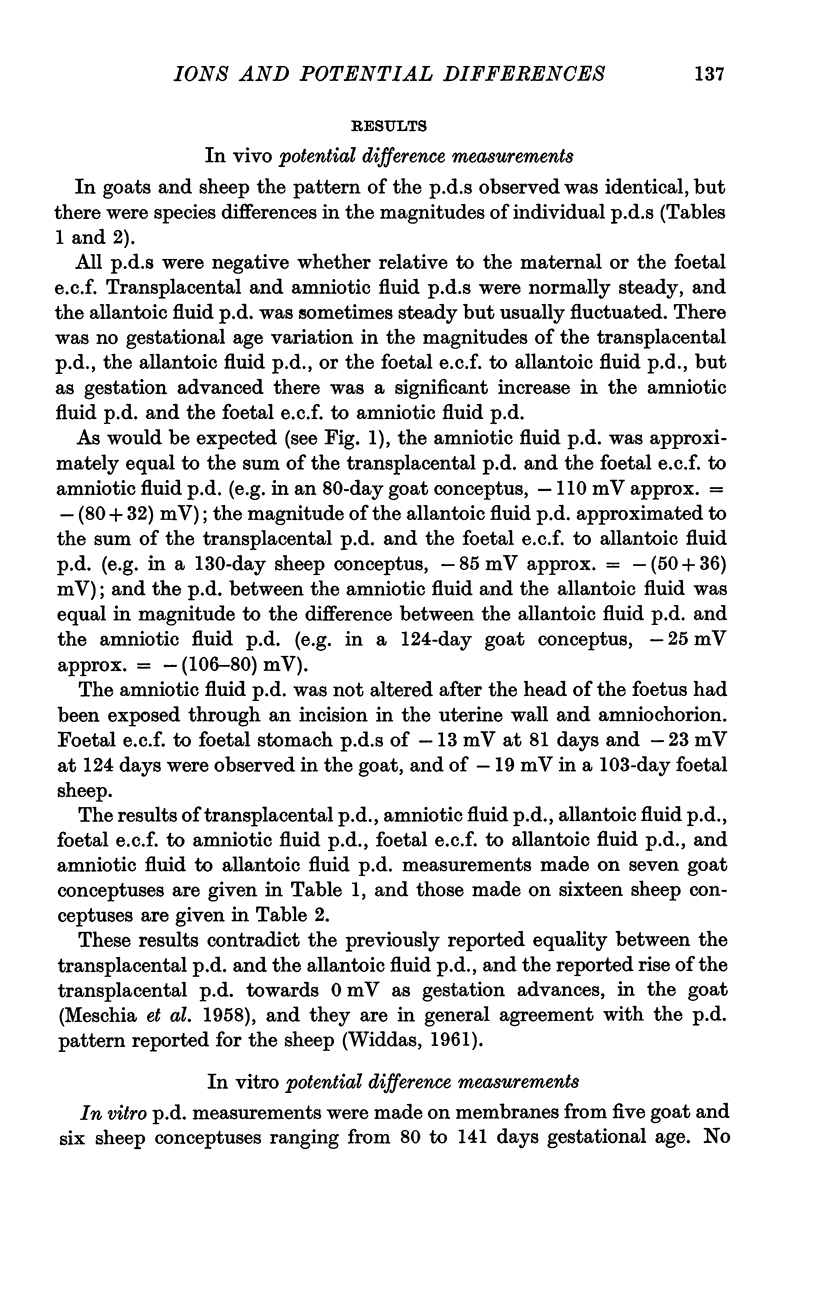

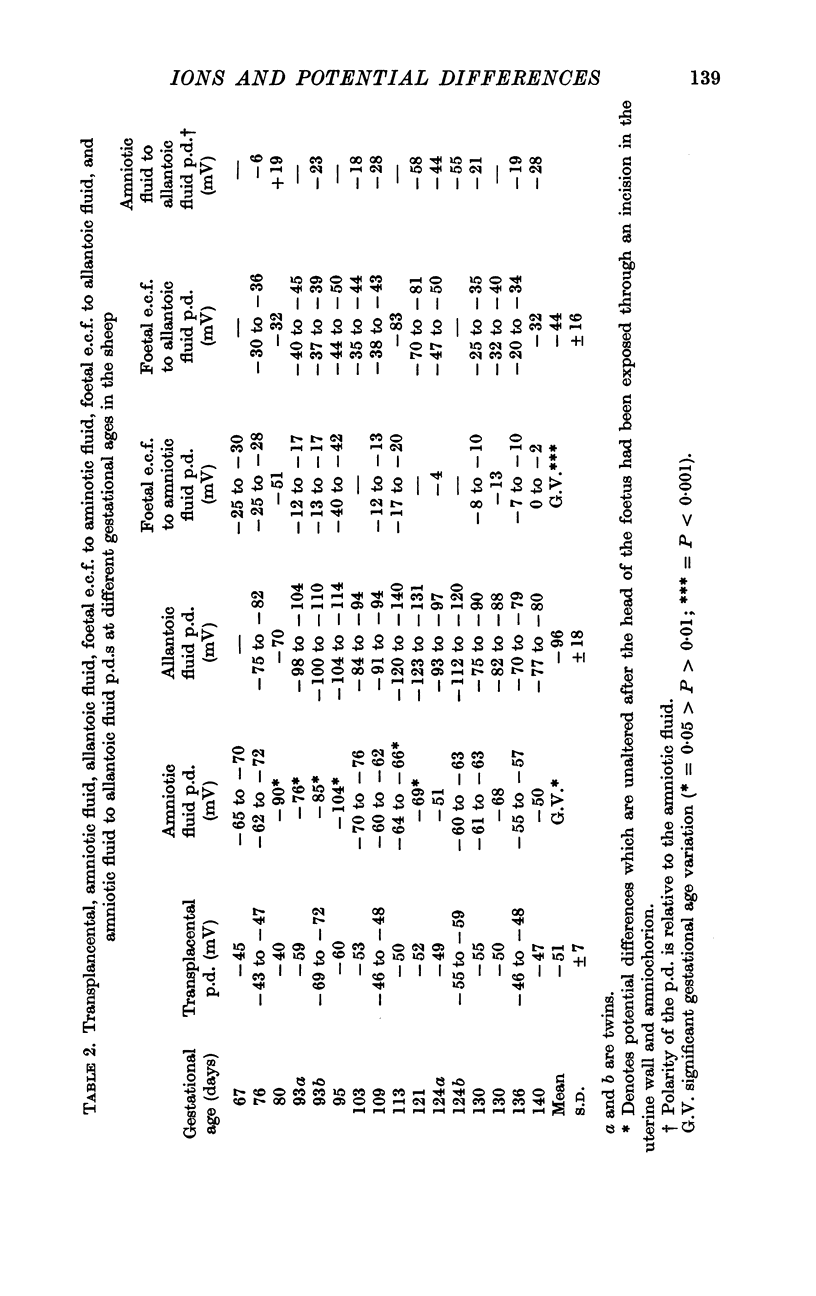
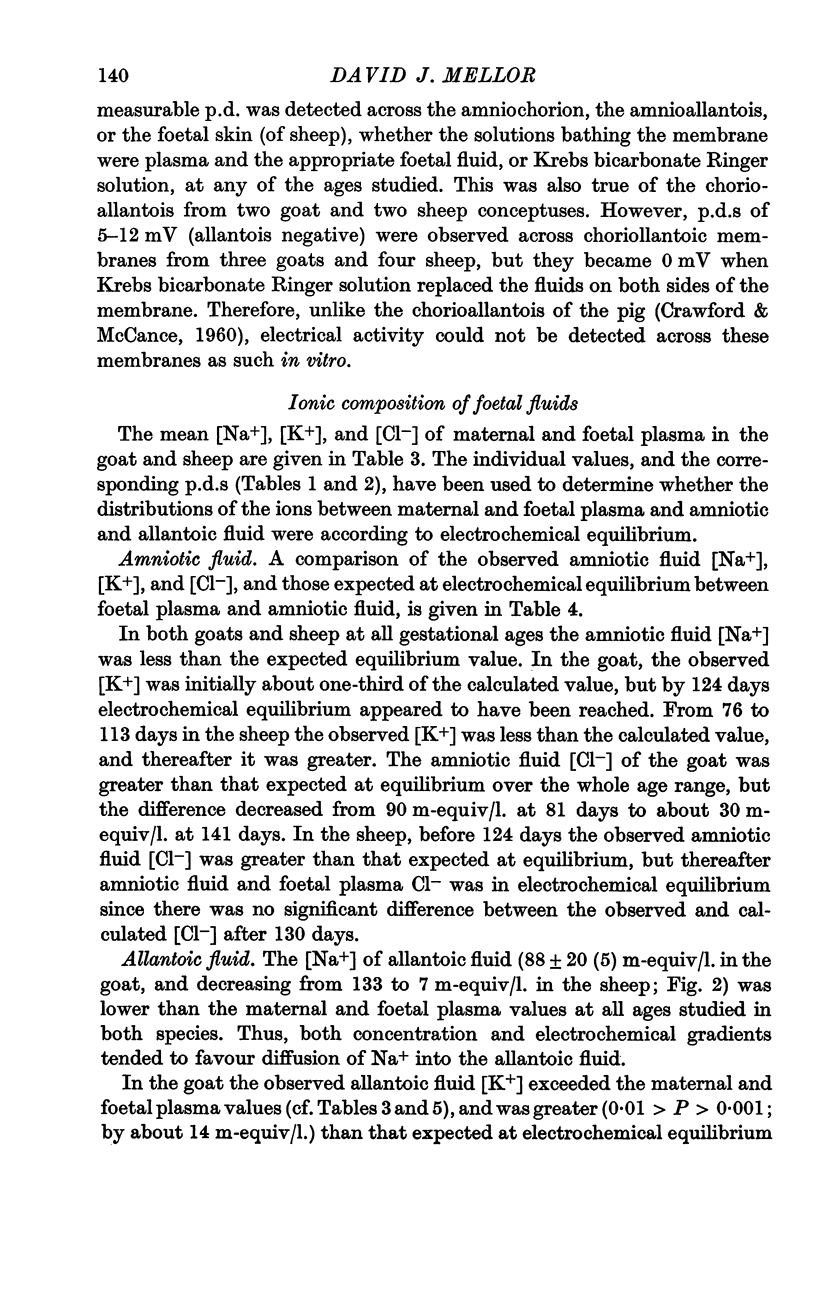
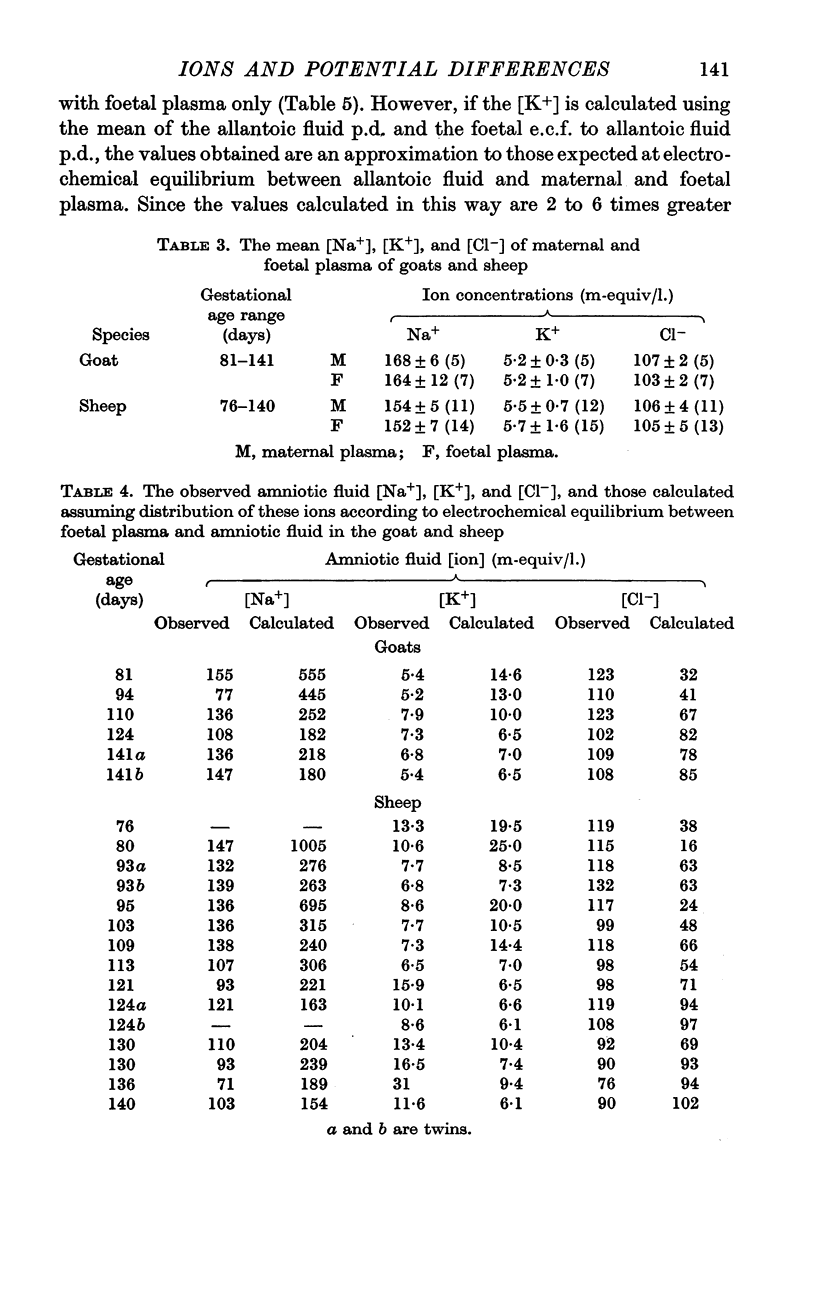
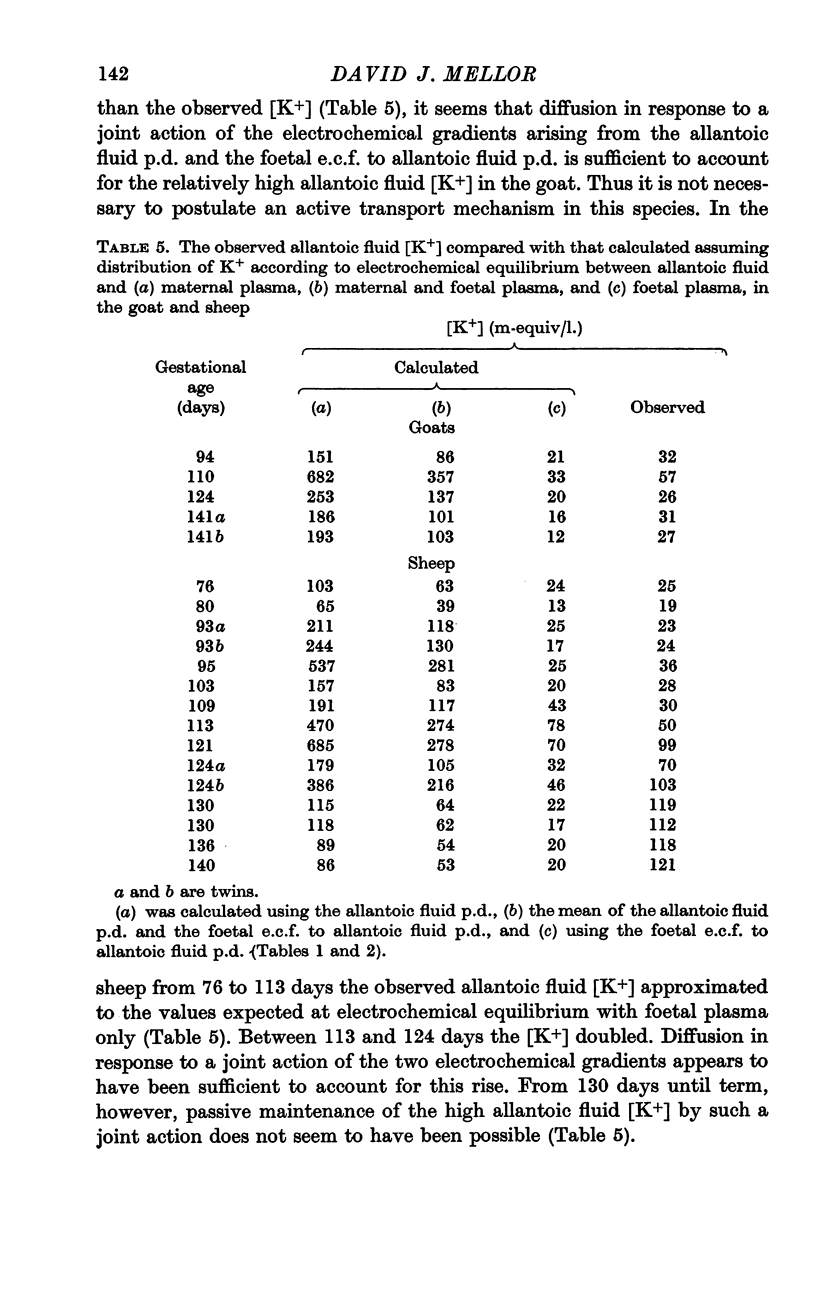
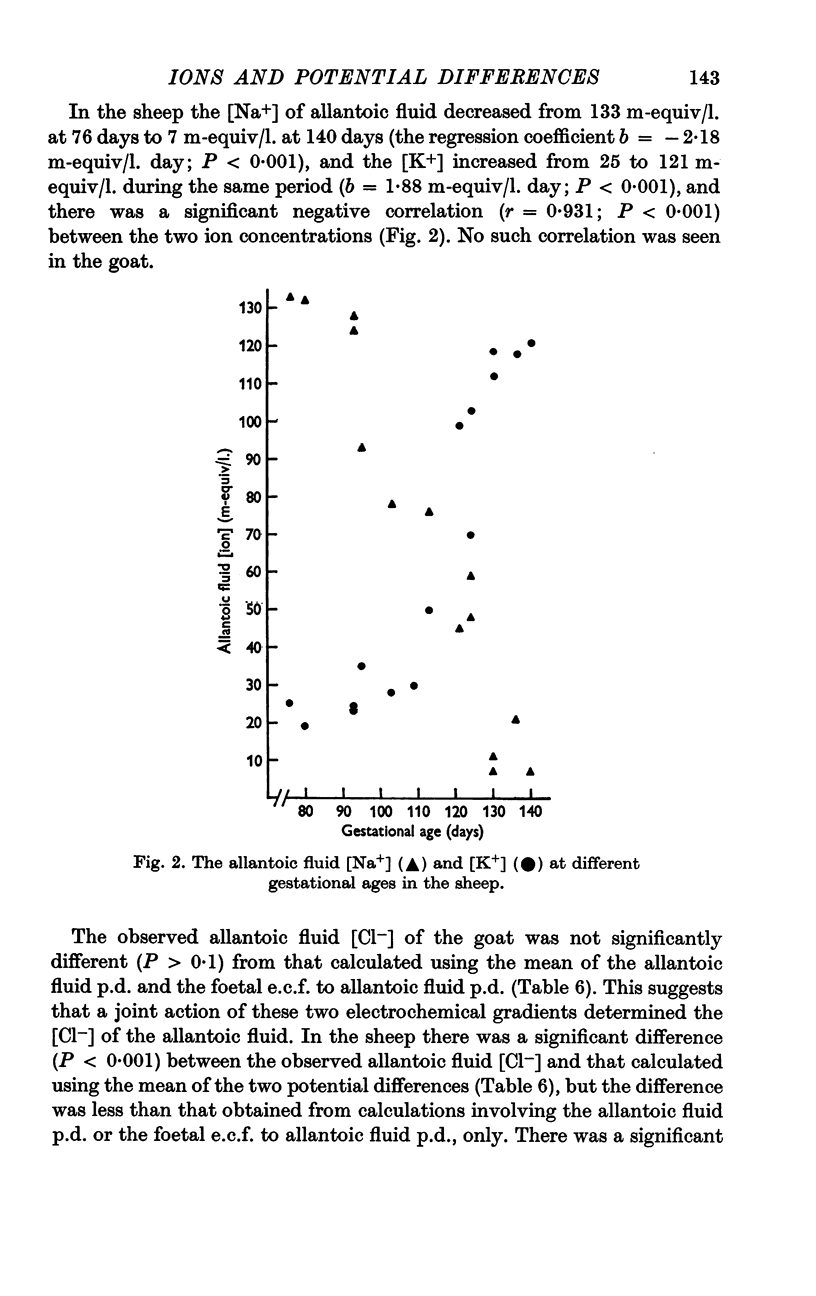
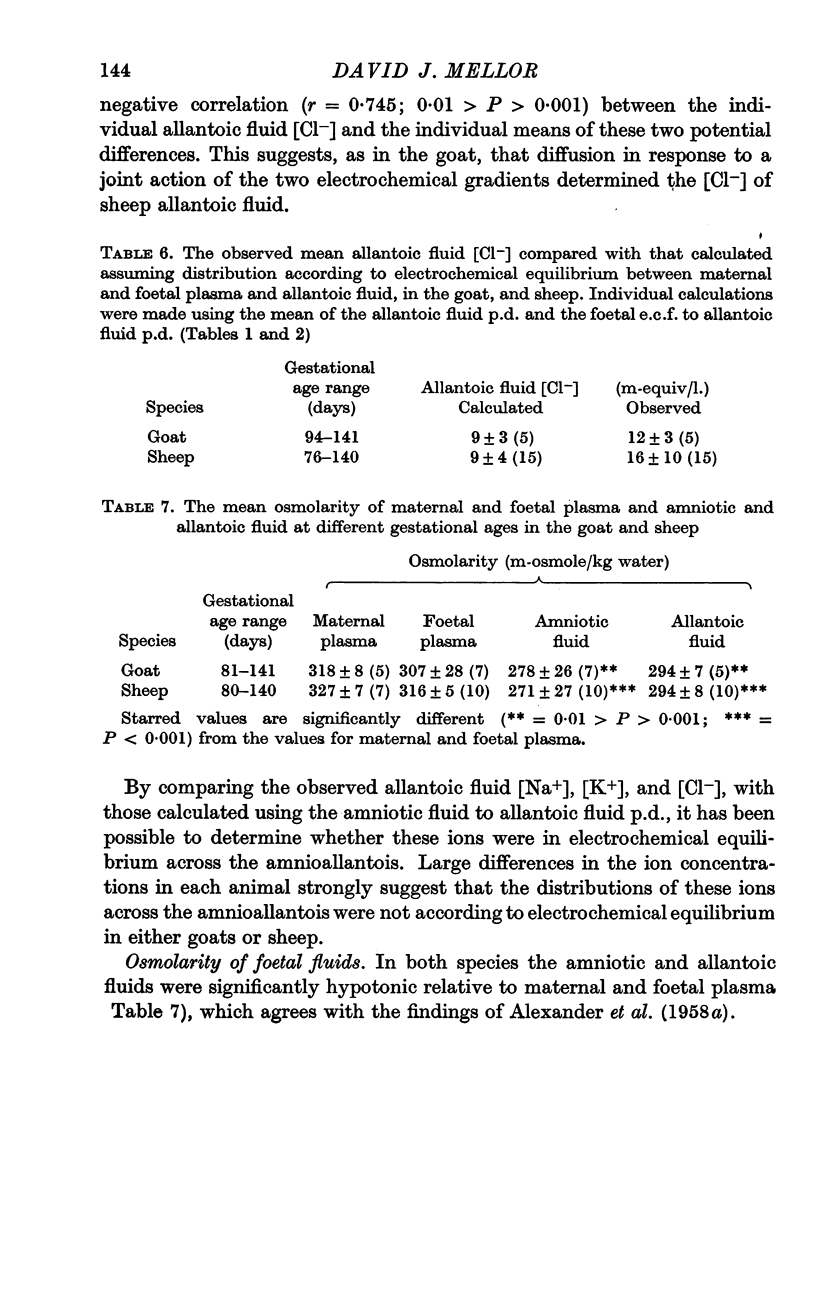
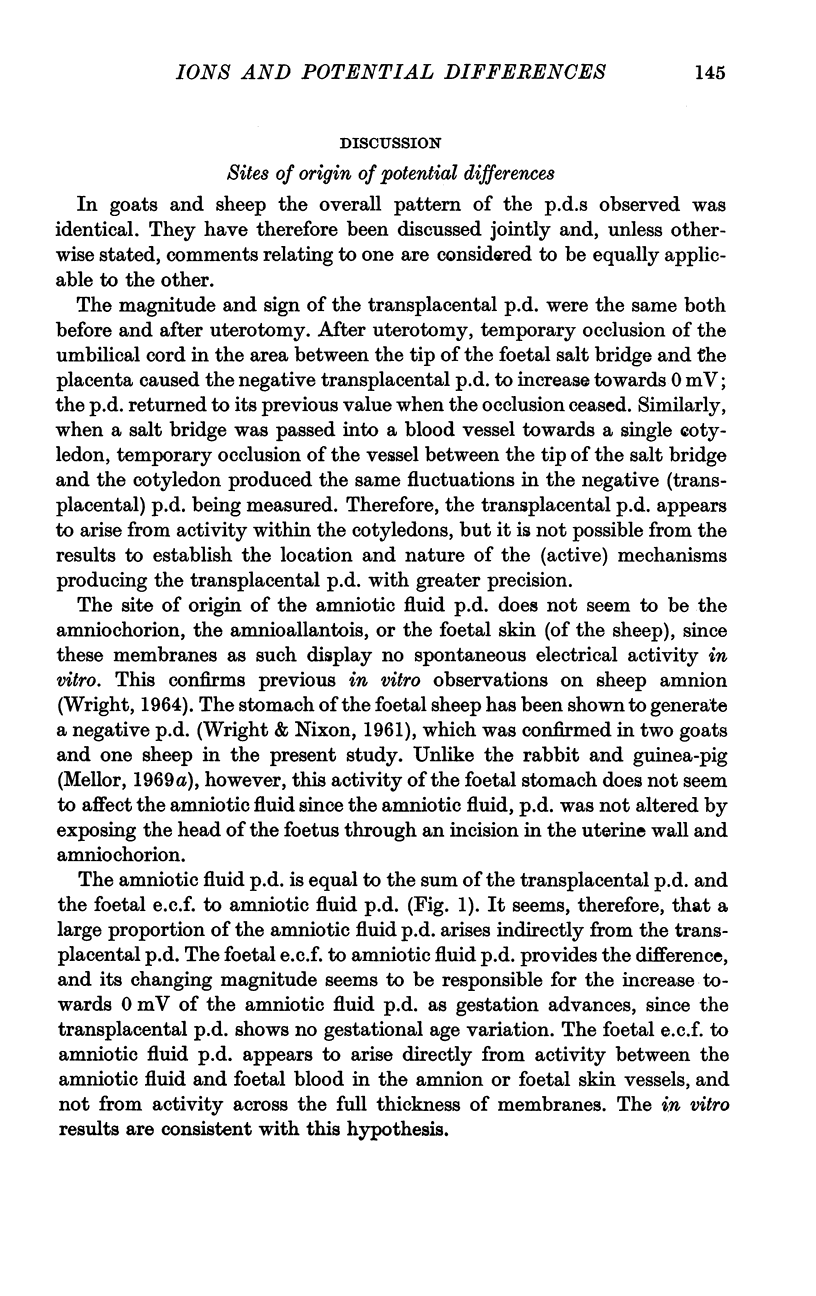
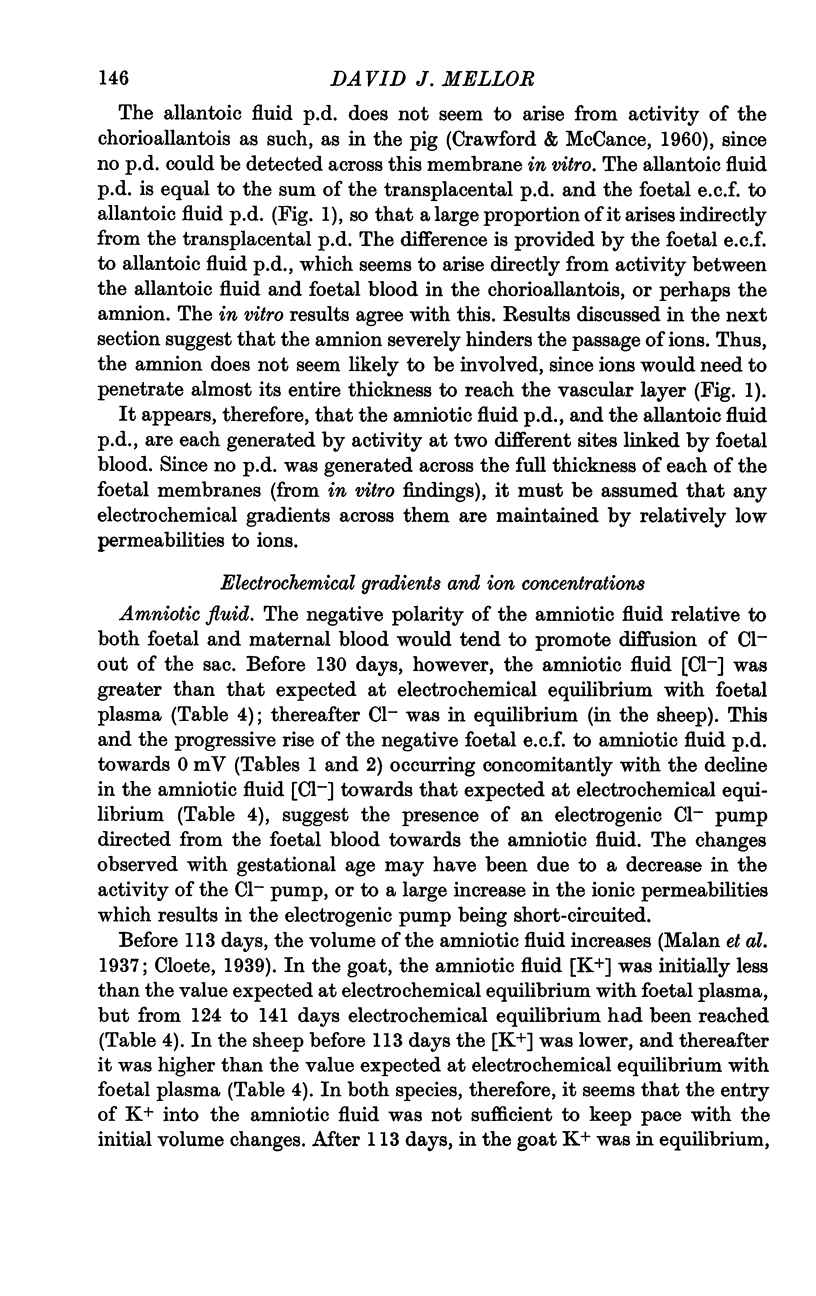
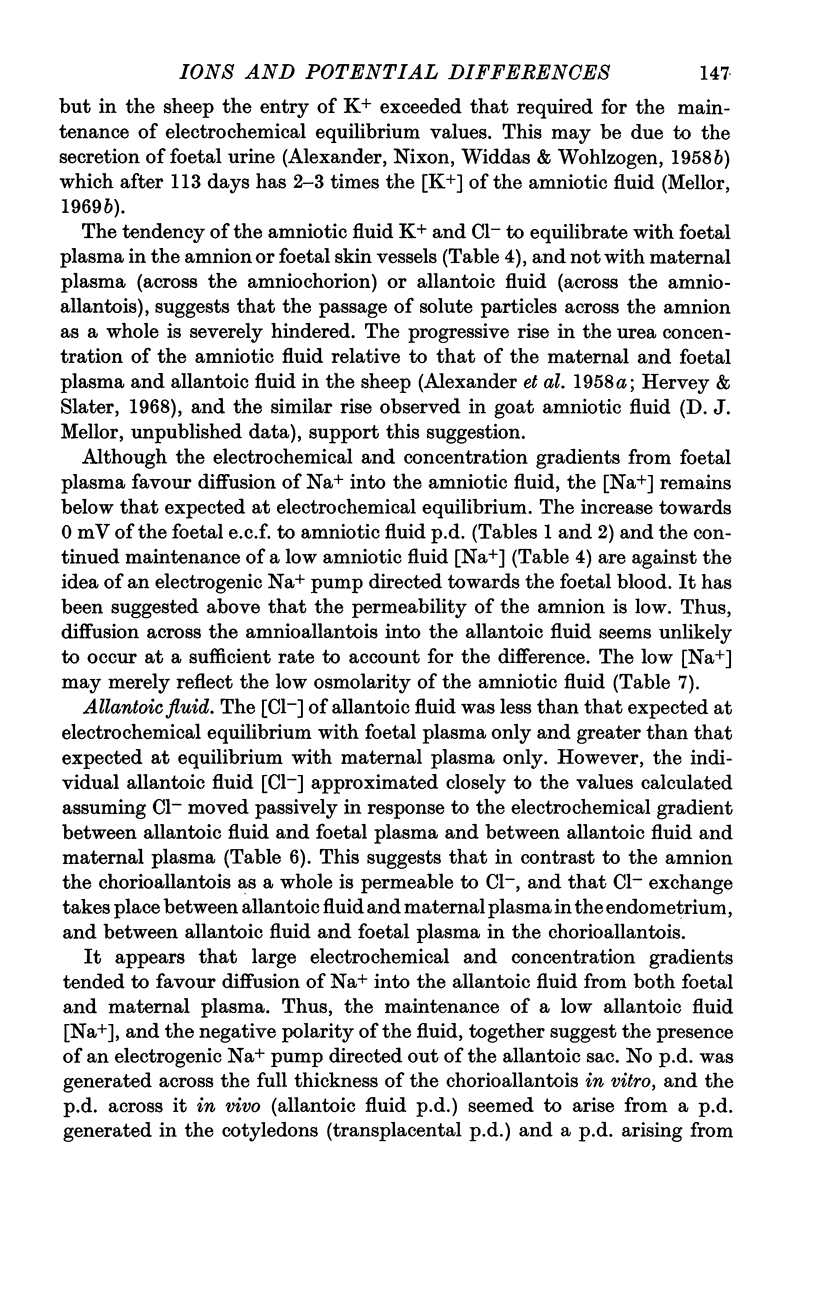
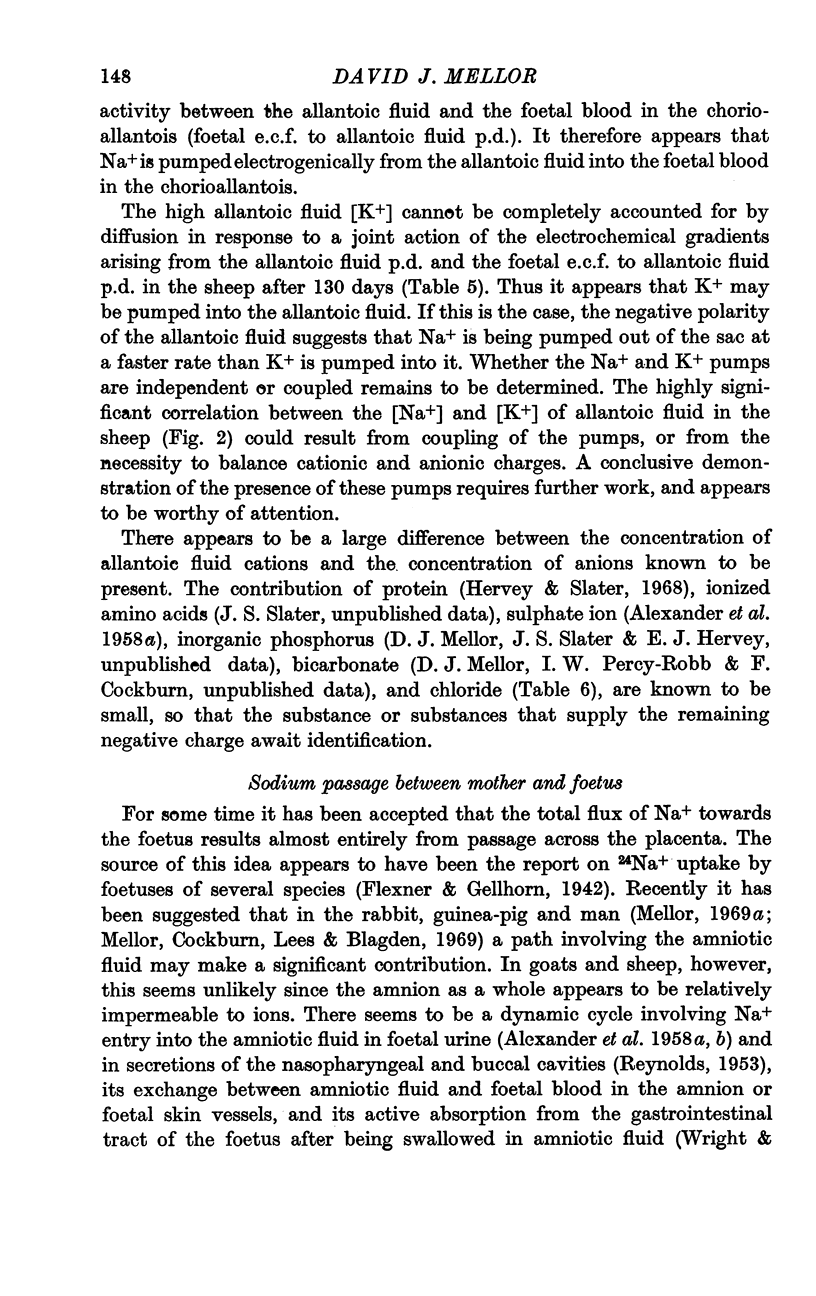
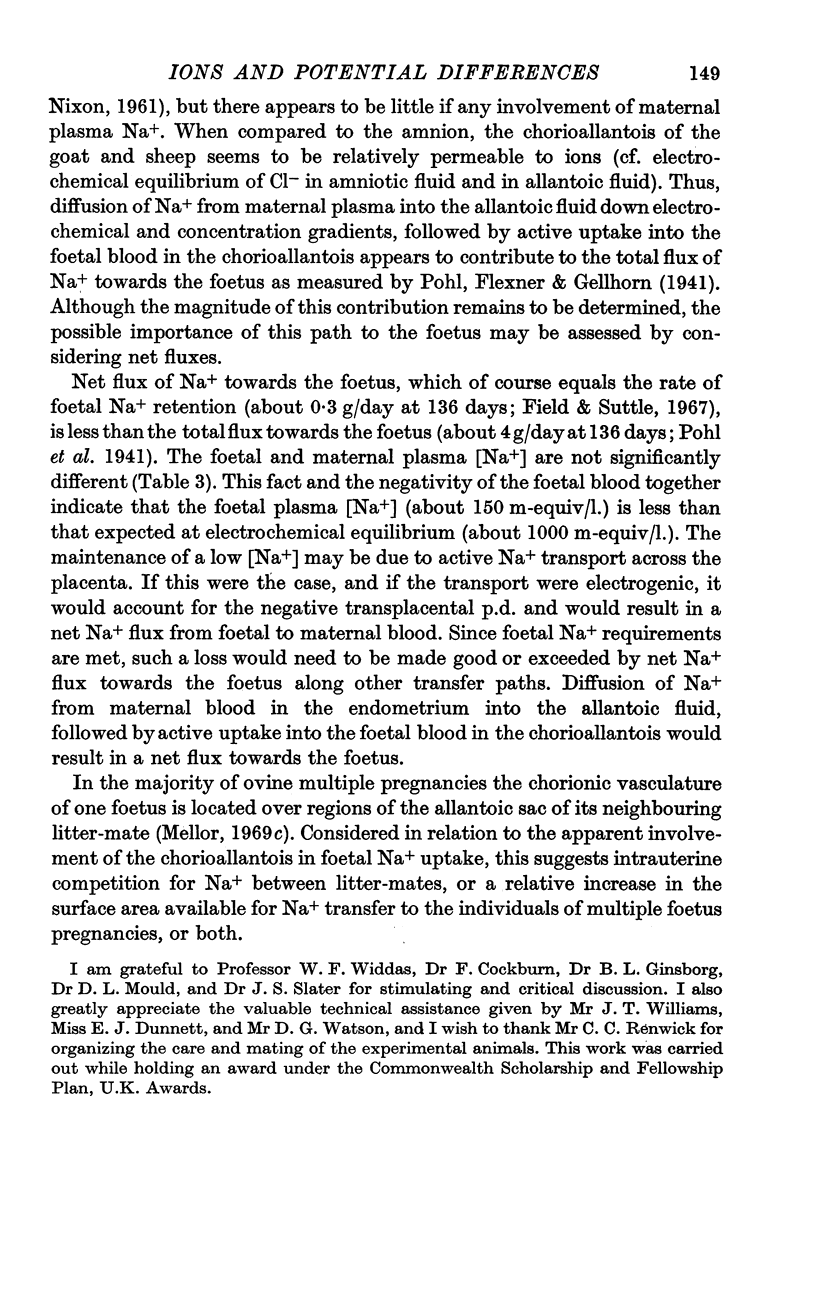
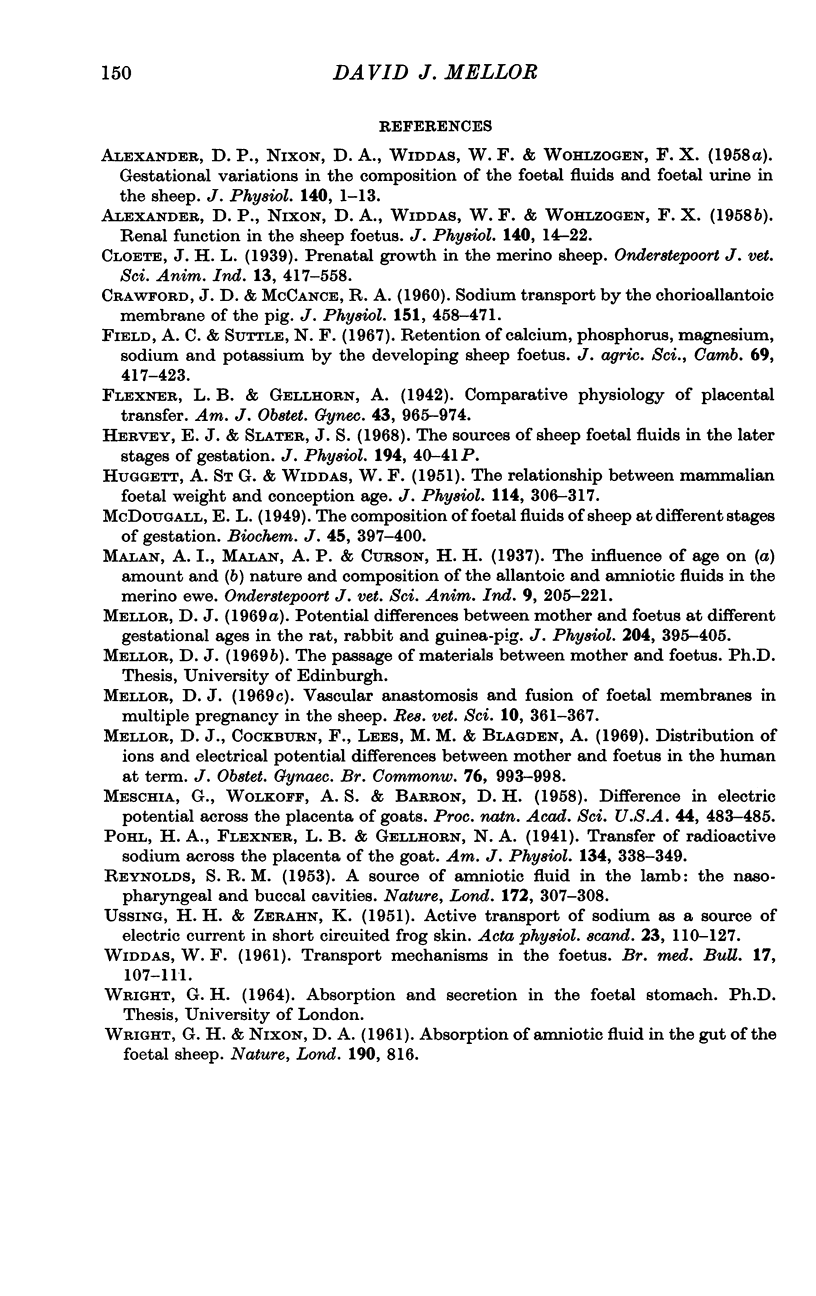
Selected References
These references are in PubMed. This may not be the complete list of references from this article.
- ALEXANDER D. P., NIXON D. A., WIDDAS W. F., WOHLZOGEN F. X. Gestational variations in the composition of the foetal fluids and foetal urine in the sheep. J Physiol. 1958 Jan 23;140(1):1–13. doi: 10.1113/jphysiol.1958.sp005911. [DOI] [PMC free article] [PubMed] [Google Scholar]
- ALEXANDER D. P., NIXON D. A., WIDDAS W. F., WOHLZOGEN F. X. Renal function in the sheep foetus. J Physiol. 1958 Jan 23;140(1):14–22. doi: 10.1113/jphysiol.1958.sp005912. [DOI] [PMC free article] [PubMed] [Google Scholar]
- CRAWFORD J. D., McCANCE R. A. Sodium transport by the chorioallantoic membrane of the pig. J Physiol. 1960 Jun;151:458–471. doi: 10.1113/jphysiol.1960.sp006451. [DOI] [PMC free article] [PubMed] [Google Scholar]
- HUGGETT A. S. G., WIDDAS W. F. The relationship between mammalian foetal weight and conception age. J Physiol. 1951 Jul;114(3):306–317. doi: 10.1113/jphysiol.1951.sp004622. [DOI] [PMC free article] [PubMed] [Google Scholar]
- McDOUGALL E. I. The composition of foetal fluids of sheep at different stages of gestation. Biochem J. 1949;45(4):397–400. doi: 10.1042/bj0450397. [DOI] [PMC free article] [PubMed] [Google Scholar]
- Mellor D. J., Cockburn F., Lees M. M., Blagden A. Distribution of ions and electrical potential differences between mother and fetus in the human at term. J Obstet Gynaecol Br Commonw. 1969 Nov;76(11):993–998. doi: 10.1111/j.1471-0528.1969.tb09465.x. [DOI] [PubMed] [Google Scholar]
- Mellor D. J. Potential differences between mother and foetus at different gestational ages in the rat, rabbit and guinea-pig. J Physiol. 1969 Oct;204(2):395–405. doi: 10.1113/jphysiol.1969.sp008919. [DOI] [PMC free article] [PubMed] [Google Scholar]
- Mellor D. J. Vascular anastomosis and fusion of foetal membranes in multiple pregnancy in the sheep. Res Vet Sci. 1969 Jul;10(4):361–367. [PubMed] [Google Scholar]
- Meschia G., Wolkoff A. S., Barron D. H. DIFFERENCE IN ELECTRIC POTENTIAL ACROSS THE PLACENTA OF GOATS. Proc Natl Acad Sci U S A. 1958 May;44(5):483–485. doi: 10.1073/pnas.44.5.483. [DOI] [PMC free article] [PubMed] [Google Scholar]
- REYNOLDS S. R. A source of amniotic fluid in the lamb: the naso-pharyngeal and buccal cavities. Nature. 1953 Aug 15;172(4372):307–308. doi: 10.1038/172307b0. [DOI] [PubMed] [Google Scholar]
- USSING H. H., ZERAHN K. Active transport of sodium as the source of electric current in the short-circuited isolated frog skin. Acta Physiol Scand. 1951 Aug 25;23(2-3):110–127. doi: 10.1111/j.1748-1716.1951.tb00800.x. [DOI] [PubMed] [Google Scholar]
- WIDDAS W. F. Transport mechanisms in the foetus. Br Med Bull. 1961 May;17:107–111. doi: 10.1093/oxfordjournals.bmb.a069882. [DOI] [PubMed] [Google Scholar]
- WRIGHT G. H., NIXON D. A. Absorption of amniotic fluid in the gut of foetal sheep. Nature. 1961 May 27;190:816–816. doi: 10.1038/190816a0. [DOI] [PubMed] [Google Scholar]


